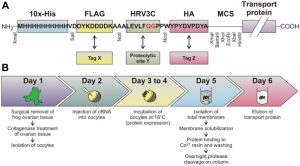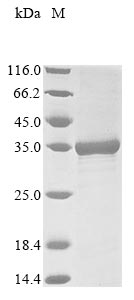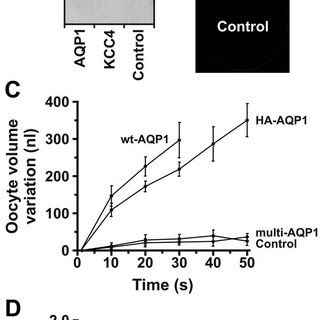What is an HA tag?
An HA tag is derived from the human influenza hemagglutinin (HA) molecule corresponding to amino acids 98-106. It has been widely used as a general epitope tag in expression vectors. The HA tag does not appear to interfere with the bioactivity or biodistribution of the recombinant HA-tagged protein.
What are the nucleotide and amino acid sequences of the peptide tag HA?
The nucleotide sequence of the HA tag is 5′ TAC CCA TAC GAT GTT CCA GAT TAC GCT 3′ or 5′ TAT CCA TAT GAT GTT CCA GAT TAT GCT 3′. The amino acid sequence of the HA tag is: YPYDVPDYA

What is the molecular weight of the HA tag?
The molecular weight of the HA tag peptide (YPYDVPDYA tag) is 1102.15 Da.
Why use an HA tag for protein expression and production?
Adding an HA tag to the C or N terminus of a protein can facilitate its detection, isolation, and purification by HA tag-specific antibodies. Sino Biological has developed N-terminal 10xHis-HA-tagged Recombinant tag-specific antibodies for ELISA, Western Blotting, immunofluorescence, and immunoprecipitation for the detection of HA-tagged protein. It can also be conjugated to agarose beads for affinity purification of HA-tagged proteins.
How are HA-tagged proteins purified?
The HA-tagged recombinant protein can be affinity purified directly from cell culture lysate or supernatant. The HA-tagged protein is bound to conjugated HA-tag-specific monoclonal antibody on an agarose gel. After washing away residual impurities, bound HA-tagged proteins can be eluted from the affinity column by a high concentration of HA-tagged peptide or by a low pH buffer.
How do I remove the HA tag after purification?
In some applications, it is desirable to remove the HA tag, for example for protein crystallization. To allow cleavage of the HA tag, it is necessary to design a protease cleavage site between the tag and the protein. An EK cleavage site behind the HA tag (HA-EK site protein structure) may allow complete removal of the HA tag and cleavage site, leaving no additional amino acids after specific cleavage of the HA tag. For more information on cleavage site and tag removal by EK and HRV-3C protease, see Enterokinase (EK), HRV-3C (Human Rhinovirus Protease).
HA-Tagged Protein Purification and Production Service
Complete services: From gene cloning/synthesis to purified proteins

Host cells
Choices of expression hosts:
- Transient transfection in HEK293 cells
- Transient transfection in CHO cells
- Stable expression in CHO cells
- Yeast cell expression system
- Baculovirus/insect cell expression system
- E. coli. microbial expression system
HA tag design: HA tag (YPYDVPDYA tag) at N- or C-terminus
Cleavage site: Option to design a cleavage site between the tag and the protein
Protease Cleavage Enzyme Selection: Enterokinase (EK), HRV-3C (Human Rhinovirus Protease), TEV
Purification:
- HA tag-specific antibody conjugated affinity column (YPYDVPDYA)
- HA-tagged affinity purification resin
Deliverable: Purified recombinant proteins (amounts to be specified by the client)
Quality specification: typically >90% purity per SDS page
Typical schedule: 8-12 weeks
The HA tag (YPYDVPDYA tag) has been widely used in recombinant protein expression and production. The HA tag allows simple and efficient affinity purification of the tagged protein using an HA tag-specific antibody conjugated to agarose beads. The HA tag (YPYDVPDYA tag) can also be used for detection on Western blots by using an HA tag-specific antibody. The HA tag can be added to the C or N terminus of a protein for expression in virtually all expression systems.
Sino Biological has successfully produced many HA-tagged proteins and purified them with HA-tagged affinity chromatography. We have a lot of experience in designing the HA tag according to the protein structure and handling any issues that arise from the protein purification process. Sino Biological has also developed highly sensitive HA tag (YPYDVPDYA tag) specific antibodies for detection in Western blot, ELISA assay, immunofluorescence and immunoprecipitation. We have also developed our own HA-tagged affinity purification resin.

